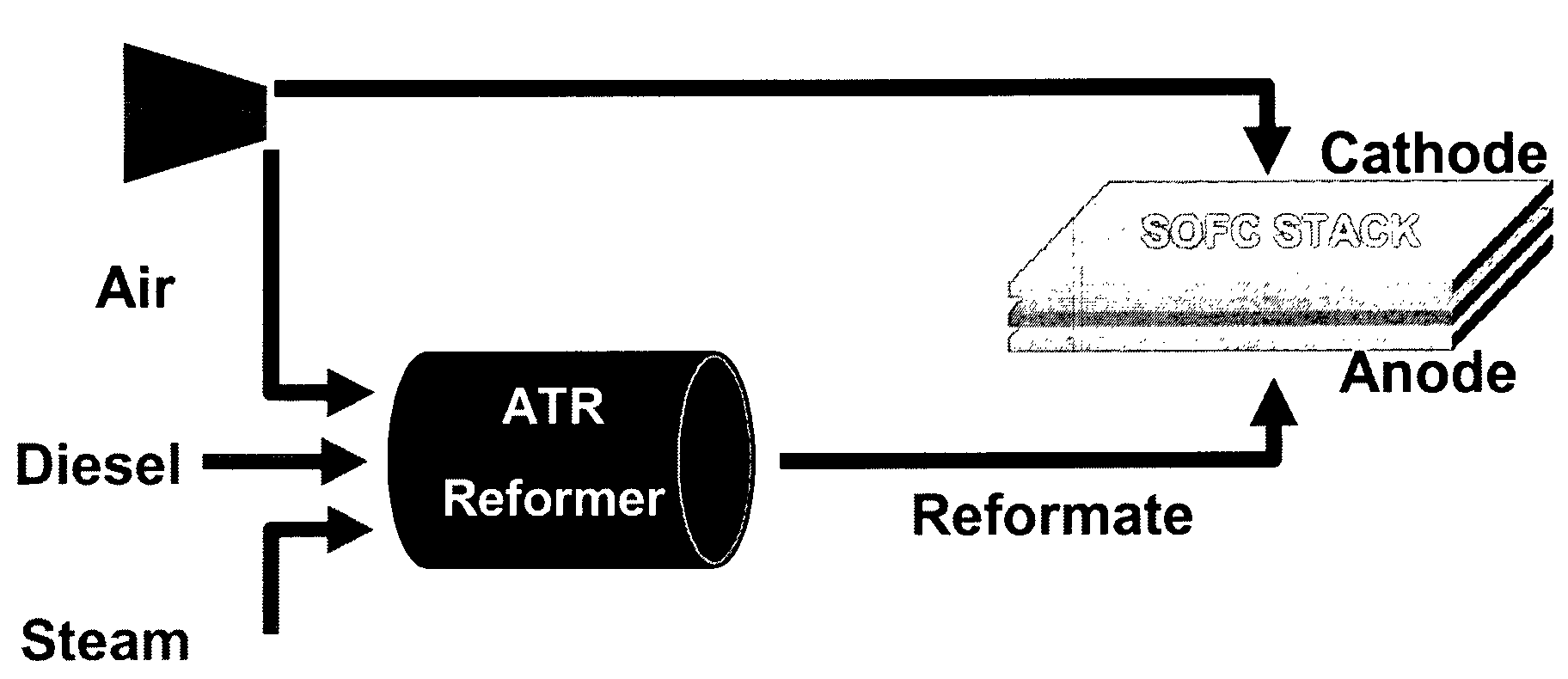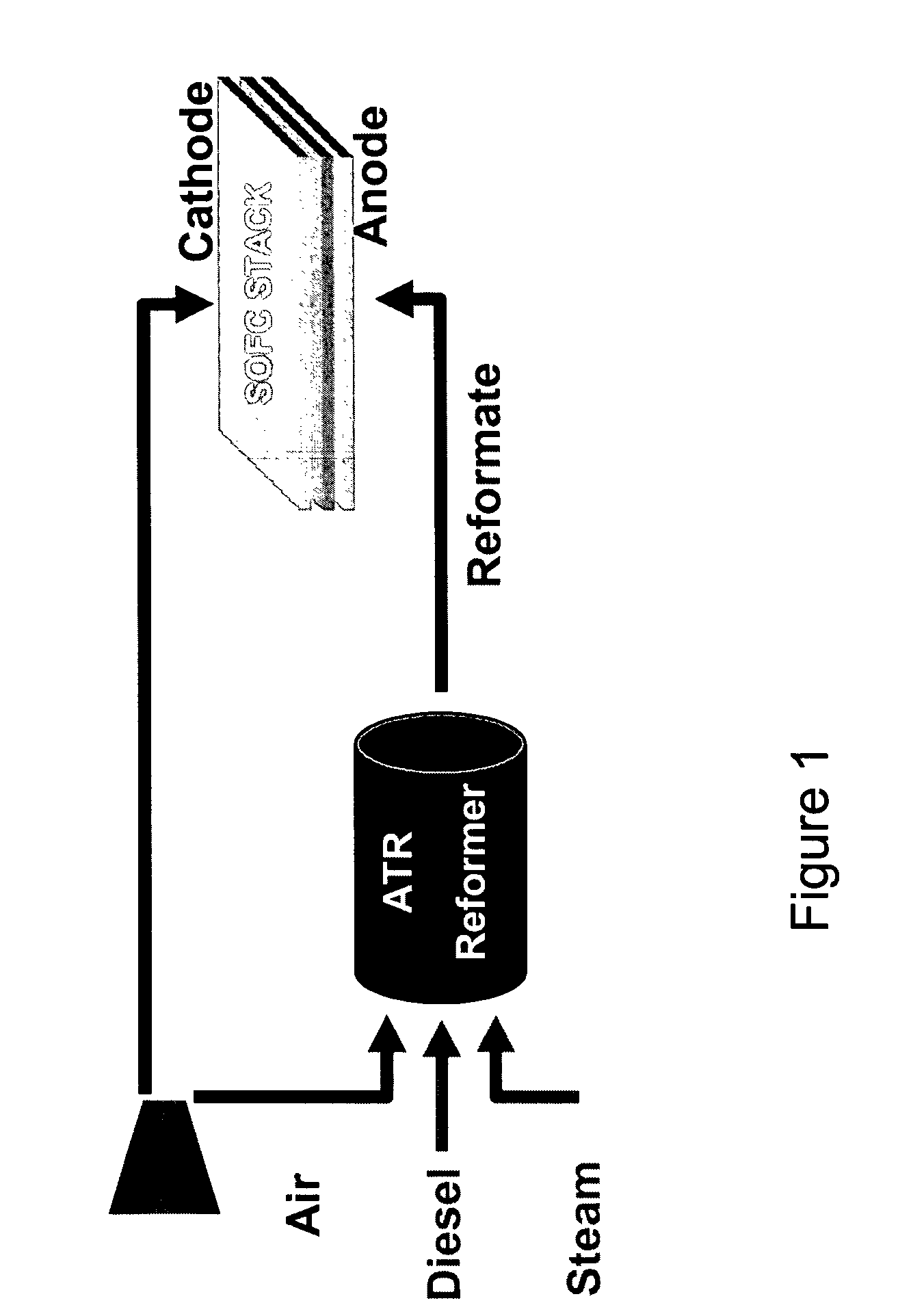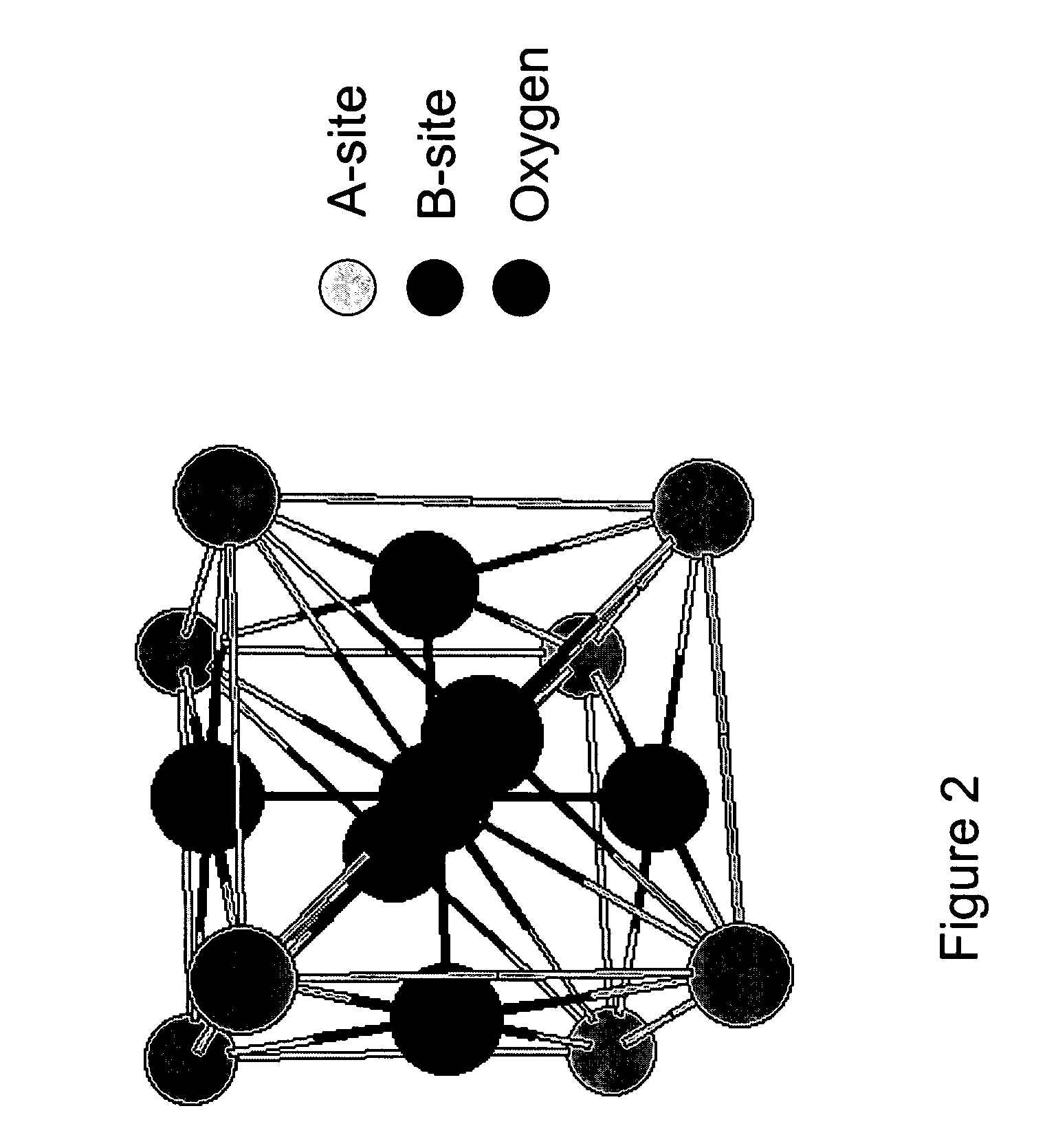Autothermal reforming catalyst having perovskite structure
a technology of autothermal reformer and perovskite, which is applied in the direction of metal/metal-oxide/metal-hydroxide catalyst, physical/chemical process catalyst, metal/metal-oxide/metal-hydroxide catalyst, etc. it can solve the problem that the cost of two-phase catalysts containing noble metals may limit the widespread potential use of fuel cell systems, and achieve high fuel feed rate, high hydrogen percentage yield, and high selectivity of conversion
- Summary
- Abstract
- Description
- Claims
- Application Information
AI Technical Summary
Benefits of technology
Problems solved by technology
Method used
Image
Examples
example 1
[0059]A LaCr0.95Ru0.05O3 catalyst was made by fully dissolving 17.9 gram of La(NO3)3.6H2O, 15.8 gram of Cr(NO3)3.9H2O, 0.66 gram of Ru(NO)(NO3)3 and 12 gram of glycine with the deionized water in a high temperature quartz beaker. After evaporating the water over a hot-plate, the mixture ignited and generated about 10 gram of LaCr0.95Ru0.05O3 powder. The powder was placed in a ceramic dish and calcined at 800° C. in dry air for about 1 hour. Subsequently, the powder was pressed and palletized to 20 / 40 mesh size catalyst pellet. About 0.9 gram of the catalyst sample thus prepared was packed into the reactor zone of the diesel reforming micro-reactor. To ensure uniform packing depth and density, the catalyst was first mixed with low surface α-alumina ceramic chips before being loaded into the reactor. During the catalytic reaction, the surrounding heater for the catalyst bed was set at 725° C. The mixture of air, steam and fuel was fed through the preheater at the constant feed rate of...
example 2
[0060]A Rh catalyst support on the cerium oxide and gadolinium oxide (Rh / CGO) was made by titrating the solution of Rh nitrate over the cerium oxide and gadolinium oxide (CGO) powder, followed by the calcination in dry air at 700° C. CGO was obtained as the commercial product from Praxair. The Rh nitrate solution was prepared by dissolving appropriate amount of salt into the deionized water so that the final Rh loading on the catalyst is about 0.5 wt. %. The catalyst powder was subsequently pelletized and tested under ATR condition similar to that discussed in Example 1. To compare the catalytic activity, the hydrogen yield and reforming efficiency at two input condition O2 / C=0.42 H2O / C=1.0 and O2 / C=0.5 H2O / C=3.0 are also listed in Table I, together with the COx selectivity of the reforming reaction. This example is used as the reference for the comparison with the perovskite catalysts.
example 3
[0061]A LaAl0.95Ru0.05O3 catalyst was made by fully dissolving 19.9 gram of La(NO3)3.6H2O, 16.4 gram of Al(NO3)3.9H2O, 15.7 gram of diluted Ru(NO)(NO3)3 solution with Ru content of 1.53 wt. % and 14 gram of glycine with the deionized water in a high temperature quartz beaker. After evaporating the water over a hot-plate, the mixture ignited and generated about 10 gram of LaAl0.95Ru0.05O3 powder. The powder was placed in a ceramic dish and calcined at 800° C. in dry air for about 1 hour. The catalyst powder was subsequently pelletized and tested according to the same steps in Example 1. The hydrogen yield and reforming efficiency at two input condition O2 / C=0.42 H2O / C=1.0 and O2 / C=0.5 H2O / C=3.0 are also listed in Table I, together with the COx selectivity of the reforming reaction. Shown in FIG. 5 are the comparison of the reforming efficiencies (bar chart) and COx selectivities (line chart) between the catalyst materials from Example 1 and Example 3 according to present invention wi...
PUM
| Property | Measurement | Unit |
|---|---|---|
| temperatures | aaaaa | aaaaa |
| temperatures | aaaaa | aaaaa |
| reforming temperature | aaaaa | aaaaa |
Abstract
Description
Claims
Application Information
 Login to View More
Login to View More - R&D
- Intellectual Property
- Life Sciences
- Materials
- Tech Scout
- Unparalleled Data Quality
- Higher Quality Content
- 60% Fewer Hallucinations
Browse by: Latest US Patents, China's latest patents, Technical Efficacy Thesaurus, Application Domain, Technology Topic, Popular Technical Reports.
© 2025 PatSnap. All rights reserved.Legal|Privacy policy|Modern Slavery Act Transparency Statement|Sitemap|About US| Contact US: help@patsnap.com



